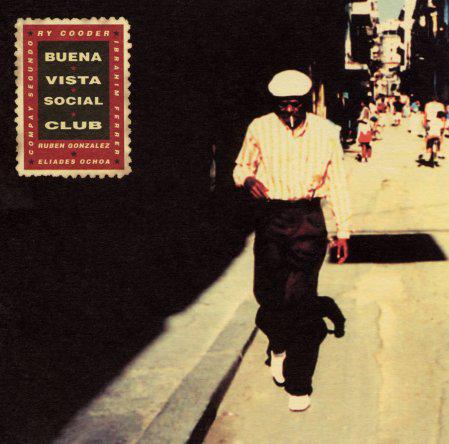-
The Way of Son and the “Septeto Santiaguero”
- Posted on June 1, 2016
- by admin
- in Blog
- Comments Off on The Way of Son and the “Septeto Santiaguero”
(Ver más abajo versión en español) Musicologists dilute the origin of Cuban musical genre, son, by attributing its appearance throughout the entire eastern part of the island. There are even those who contend some remote first appearance in the West along with other fallacies such as the final burial place of Micaela Gines, Pascual de Ochoa and other freed slaves that according to the author, Alejo Carpentier, composed the Son of Mateodora, erroneously considered the first son written.

The truth is that this Cuban musical genre always, or almost always, is connected to Santiago de Cuba. The twentieth century opened and closed with son, and it is said that already by 1909 the genre had taken shape and conquered the West. Then, by the end of the millennium it happened that the Buena Vista Social Club, with several Santiagueros on the payroll such as Compay Segundo, Ibrahim Ferrer and Eliades Ochoa to name a few, spread son throughout the world and placed the island on the map for the commercial market, a tedious phrase in international music.
Now surprisingly, the Septeto Santiaguero, Fernando Dewar´s group whose base is Santiago de Cuba, has broken into the international music scene by virtue of their pure talent, with no other artifacts. The group was born out of the enthusiasm of Juan de Marcos and his ideas, which no one can doubt left their mark on the group Sierra Maestra first and then on the Buena Vista Social Club and even on the Afro Cuban All Stars.
The Cuban music scene, especially in the nineties, was reflected by the works of artists such as Irakere, the Van Van and Adalberto Alvarez. Then, also by Timba which made a dent in the market and as we said, the Buena Vista who opened the big door to waves of sextets, septets, and even octets. One can find such variations as septets with a trombones included.
Some of these groups like the Jóvenes Clásicos del Son are indeed quite santiaguera in style and came to impregnate musical taste in the island, along with the “can´t be stopped” Santiaguero, Jose Nicholas who was a real hit. Santiago has squeezed a list of groups into the musical scene which included: Matamoroson, Son of Buena Fe, the Septeto Turquino and the Septeto Santiaguero, who no one doubts has achieved the most impact.

Elsewhere there was talk of the Traje Nuevo or the Octava Pesadilla, among other ensembles who tried to open their way, but the Santiagueros had the formula. There is no doubt about it: Dewar´s musicians travel around the planet performing their son formula, especially with the works of young composers and incorporating traditional elements of Cuban musical styles such as the music from student groups, just to name one.
Fortunately for us, they just do not stop working and one can hear them the same in Songo-La Maya or in Finkenstein. On their CDs, guests and influences appear such as Ruben Blades, Oscar de Leon and Don Cheo Feliciano and with their record label, Picap, they were nominated first for two Latin Grammies. Then they won the Cubadisco prize for their single “Vamos Pa’ la Fiesta”, in addition to another Cubadisco award, the Latin Grammy in 2015 and an English Grammy nomination for their tribute to Los Compadres with Jose Alberto El Canario. (See Cuban television clip on this tribute here.)
The Septeto Santiaguero has said that they will continue with tributes and record more singles. They can be heard to the beat of today´s son blended with the well known traditional son of Matamoros or Sindo Garay everywhere in Santiago de Cuba, in the Casa de la Trova, and on the streets of Enramada, Aguilera or Garzon.
 Por Rogelio Ramos Dominguez: is former Editor-in-Chief of the radio channel, Emisora Sonido SM. Currently, he divides his time between this radio channel where he is a writer, announcer and program director and his work as a reporter for Santiago de Cuba´s television channel, Tele Turquin in Songo-La Maya. As an expert in Cuban music and literature, he lectures on these subject and has a Facebook page dedicated to Cuban singer-songwriters and the ballad. Also, he is a freelance songwriter, poet, blogger and content writer specializing in Cuban themes. Email: rogeliord06@gmail.com
Por Rogelio Ramos Dominguez: is former Editor-in-Chief of the radio channel, Emisora Sonido SM. Currently, he divides his time between this radio channel where he is a writer, announcer and program director and his work as a reporter for Santiago de Cuba´s television channel, Tele Turquin in Songo-La Maya. As an expert in Cuban music and literature, he lectures on these subject and has a Facebook page dedicated to Cuban singer-songwriters and the ballad. Also, he is a freelance songwriter, poet, blogger and content writer specializing in Cuban themes. Email: rogeliord06@gmail.com(Versión en español)
El Camino soneado del Septeto Santiaguero
Los musicólogos reparten al origen del son cubano en todo el oriente de la isla, lo disuelven, y no falta quien anuncie incluso sucu sucus primarios en el occidente y otros asuntos como el entierro definitivo de Micaela Ginés, Pascual de Ochoa y aquellos horros que según el escritor Alejo Carpentier escribieran el Son de la Mateodora , considerado erróneamente el primer son.
Lo cierto es que este género musical cubano siempre, o casi siempre, sabe a Santiago de Cuba. El siglo XX abrió y cerró con son, se dice que ya por el 1909 el género había tomado forma y conquistaba occidente y a finales del milenio ocurrió que el Buena Vista Social Club, con varios santiagueros en la nómina, citemos, por ejemplo a Compay Segundo, Ibrahim Ferrer y Eliades Ochoa, esparció el son por el mundo y situó a la isla en el mapa mercantil, que palabra tediosa, de la música internacional.
Ahora sorprende EL Septeto Santiaguero, los muchachos de Fernando Dewar, que a base de son hecho desde Santiago de Cuba irrumpen en el panorama musical internacional a golpe de talento, sin otras herramientas.
Estos muchachos nacen de un furor abierto por Juan de Marcos y sus ideas, ya nadie puede dudar cuanto dejó Sierra Maestra y luego el citado Buena Vista Social Club e incluso Afro Cuban All Stars. El panorama musical cubano, sobre todo de los noventa, se vio reflejado en ciertos mercados: Irakere, Van Van, Adalberto Álvarez y posteriormente la timba hacían mella en el muro y como decíamos el Buena Vista… abrió la gran puerta, entonces vino una ola de sextetos, septetos, y hasta octetos y, mire usted, septetos con trombón incluido.
Algunas de estas agrupaciones como Los Jóvenes Clásicos del Son, por cierto con nómina bastante santiaguera llegaron a instalarse en el gusto musical de la isla, aquello de “No pueden parar”, del santiaguero José Nicolás fue un verdadero hit, pero en Santiago apretó fila una lista de agrupaciones entre las que se incluían: Matamoroson, Son de Buena Fe, El Septeto Turquino y el que, nadie lo duda ha logrado mejor impacto: El Septeto santiaguero
En otras partes había que hablar de Traje Nuevo o la Octava Pesadilla, entre otros ensambles quienes son en ristre trataron de abrir paso, pero el Santiaguero, tiene la fórmula. No hay dudas. Los muchachos de Dewar, le dan la vuelta al planeta con sones que apuestan, sobre todo, por el trabajo de jóvenes compositores e incorporando elementos del conjunto y hasta la estudiantina.
Para suerte de todos, en los discos suyos, aparecen invitados e influencias que llegan incluso a un Rubén Blades, Oscar de León y hasta Don Cheo Feliciano. Cuentan junto a su disquera Picap dos nominaciones al Grammy Latino y no paran de trabajar, se les escucha lo mismo en Songo- La Maya que Finkenstein. Fueron premiados en Cubadisco por el fonograma “Vamos Pa’ la Fiesta” y, y ahora suman otro premio Cubadisco, un Grammy latino y la nominación al Grammy anglo por el tributo a Los Compadres junto a José Alberto el Canario (ver vídeo aquí).
Han declarado que van a seguir con estos homenajes y harán otros fonogramas . Todo a golpe de son , estos muchachos que se puede escuchar en la casa de La Trova de Santiago de Cuba y ver por la Calle Enramadas , Aguilera o Garzón. Estos músicos que unen lo de hoy con el añoso sonido de Matamoros o Sindo Garay









